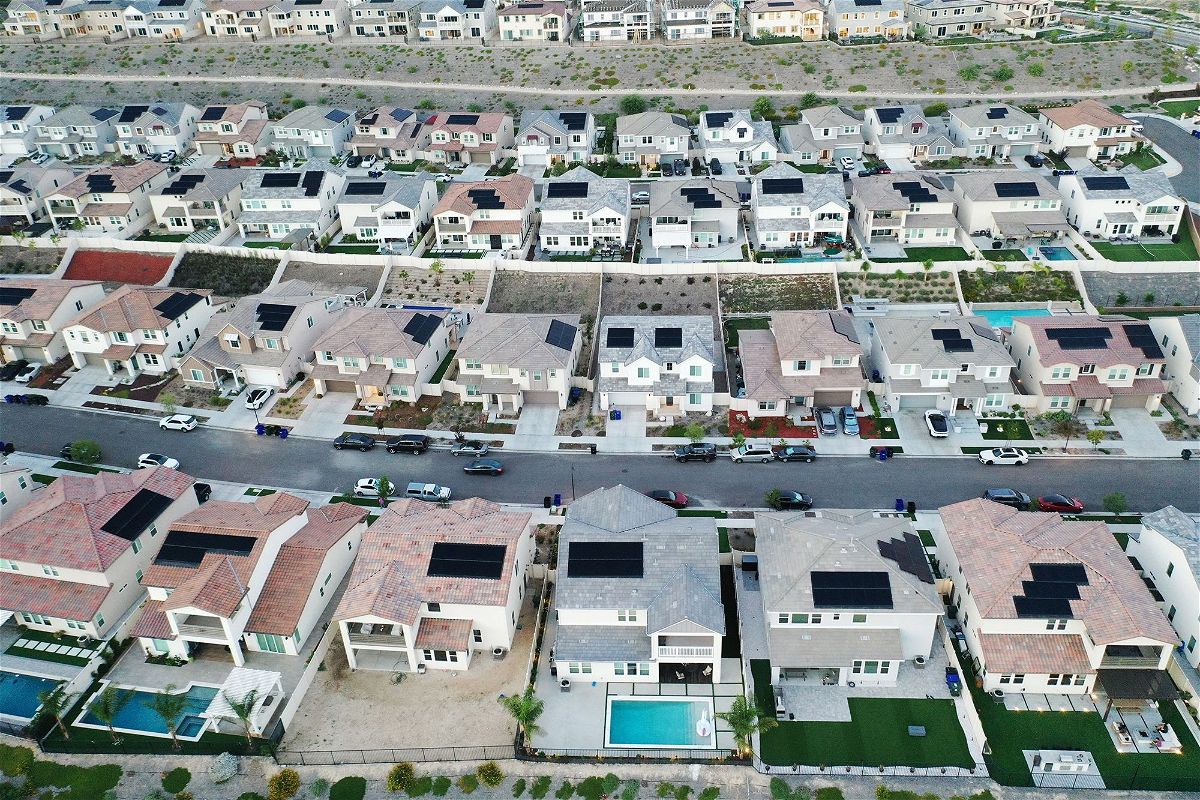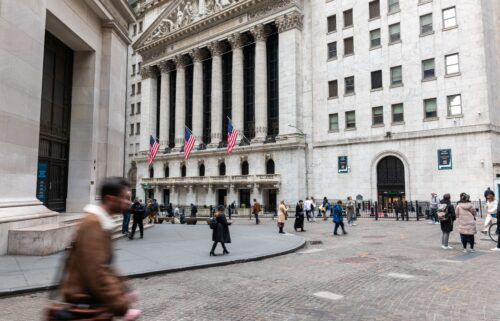Mortgage rates continue to climb, hitting 7.57%

An aerial view of homes in a housing development on September 08
By Anna Bahney, CNN
Washington, DC (CNN) — Mortgage rates climbed for the fifth consecutive week Thursday, following recent jobs and inflation reports that surged past forecasts and set expectations that decades-high interest rates could stay higher for longer.
The persistently higher mortgage rates are putting added strain on today’s would-be homebuyers who are also confronting elevated home prices due to a lack of inventory of homes for sale.
The 30-year fixed-rate mortgage averaged 7.57% in the week ending October 12, up from 7.49% the week before, according to data from Freddie Mac. A year ago, the 30-year fixed-rate was 6.92%. The last time rates were this high was in December 2000.
“The good news is that the economy and incomes continue to grow at a solid pace,” said Sam Khater, Freddie Mac’s chief economist. “But the housing market remains fraught with significant affordability constraints. As a result, purchase demand remains at a three-decade low.”
The average mortgage rate is based on mortgage applications that Freddie Mac receives from thousands of lenders across the country. The survey includes only borrowers who put 20% down and have excellent credit.
Mortgage rates have spiked during the Federal Reserve’s historic inflation-curbing campaign — and while a good deal of progress has been made, it is not yet as low as the Fed would like.
The Fed’s preferred inflation measure, the core Personal Consumption Expenditures index, is currently 3.9%, which is nearly double the Fed’s target of 2%. But it is the lowest annual increase that index has seen in two years and is a positive step toward the Fed’s target.
Rates ‘higher for longer’
“Last week’s jobs report exceeded investor expectations, with 336,000 net new jobs, resulting in a late-week surge in the 10-year Treasury yield and a bump in mortgage rates,” said Hannah Jones, senior economic research analyst at Realtor.com.
But the incursion by Hamas into Israel this weekend created geopolitical uncertainty that brought mortgage rates lower: Investors sought out the safety of the bond market, sending the yield on the 10-year Treasury note falling earlier this week.
Mortgage rates tend to track the yield on 10-year US Treasuries, which move based on a combination of anticipation about the Fed’s actions, what the Fed actually does and investors’ reactions. When Treasury yields go up, so do mortgage rates; when they go down, mortgage rates tend to follow. While the Fed does not set the interest rates that borrowers pay on mortgages directly, its actions influence them.
“Though the weekly movement settled from last week’s surge, rates remain near two-decade highs and more than 4 [percentage] points higher than two years ago,” said Jones.
“The Fed’s ‘higher-for-longer’ monetary policy keeps upward pressure on rates, making a descent unlikely until new data suggests that inflation is moving in the right direction.”
More applications for adjustable-rate mortgages
Even as rates were climbing last week, applications for mortgages ticked up slightly, mostly because of an increase in applications for adjustable-rate mortgages, or ARMs, according to the Mortgage Bankers Association.
“Mortgage applications increased for the first time in three weeks, pushed higher by a 15% jump in ARM applications,” said Bob Broeksmit, CEO of MBA. “With mortgage rates well above 7%, some prospective homebuyers are turning to ARMs to lower their monthly payment in the short term amidst these high mortgage rates.”
MBA’s average rate for a fixed-rate 30-year mortgage last week moved up to 7.67%, while the average rate for a 5/1 ARM, which has a fixed rate for the first five years and resets once per year after that, dropped to 6.33% from 6.49%. (Freddie Mac does not track average rates for adjustable-rate mortgages.)
Adjustable-rate mortgages accounted for 9.2% of all mortgages last week, according to MBA. That’s the highest share since November 2022, when rates on 30-year fixed rate loans also were over 7%.
Prospective buyers have had to get creative to prepare financially for homeownership, said Jones.
“Though buyers have shown signs of adjusting to the higher-rate environment, limited inventory has kept home prices elevated, cutting further into the buying power of shoppers hoping to find a suitable home,” she said.
While many repeat buyers can leverage their existing home equity in today’s expensive market, she said, younger homebuyers often have a harder time coming up with the money for a home purchase.
At today’s mortgage rate, a household typically needs an annual income of at least $120,000 to purchase a median-price US home, assuming a 20% down payment, Jones said.
The-CNN-Wire
™ & © 2023 Cable News Network, Inc., a Warner Bros. Discovery Company. All rights reserved.

